Хаас за Япония
Ромен Грожан:
You’ve been quoted as saying that Suzuka is your most favorite track in the world. Why?
It’s always difficult to say exactly why. I think it’s the flow, the corners, the high-speed nature of the track. There’s a risk as well with all the gravel and the narrow parts of the circuit. Overall though, it’s not one thing, and sometimes you don’t know why you like something, you just do.
You led 26 laps in the 2013 Japanese Grand Prix at Suzuka before finishing third. That is the most laps you’ve led at any Formula One venue. Talk about that race and how you were able to run out front for so long.
I was fourth on the grid and made a really good start. I led from the first corner. Then Red Bull played its strategy. They put one car on a two-stop (strategy) and the other on a three-stop strategy. We led 26 laps, but we lost position to them. It was great, though. I remember telling myself to not go out as all the world’s TVs were on me. It was a great feeling to be leading. I loved it. I remember going to the train station after the race and it was packed with all the fans. It was hectic, but memorable.
There seems to be a delicate balance at Suzuka in regard to downforce. Too much and you go slowly down the straights. Too little and you won’t have the confidence to attack the track’s twists and turns. Obviously, the level of downforce is predicated on how comfortable you are at speed. How do you achieve this balance?
It’s one of those tracks where you need quite a lot of downforce and a really good car in the high-speed corners. There are some important low-speed ones as well. It’s about getting the right confidence in being able to push to the limit in those tricky sector-one turns. It’s not an easy track to set up the car, but definitely a really good one to be on.
Understeer through the esses between turns three and seven is often at the top of the to-do list at Suzuka. How do you address understeer and at what point does a change to help the car in one section of the track hurt it in another section?
It’s a fine line. If you start getting understeer too early, you’re out of the phase quite early onto turns three, four, five, six, seven and eight. If you start with oversteer, it’s bad as well. There’s a fine line in having the right balance there, and to not be too far off what you should have in the low-speed corners as well.
Would you call Suzuka a driver’s track?
Definitely.
Can the driver make more of a difference at Suzuka than at some other tracks?
Not really, unfortunately. It’s about finding the right balance with the car. Your car’s performance dictates your performance at the end. It’s more or less the same everywhere. You can try to drive around and be quite consistent more easily than at other tracks.
Where are the overtaking opportunities at Suzuka?
Definitely at turn one with the DRS. There’s also big braking at the chicane at the last corner. There’s the middle hairpin too where you can have a go on the braking.
What is your favorite part about Suzuka?
Very difficult to pick just one, but I’ll go for sector one.
Describe a lap around Suzuka.
Turns one and two are very high-speed on entry. They’re long corners with a tricky exit. Sector one has a flow of corners where you really want to keep the perfect line all the way through, with the tricky one being turn seven and eight going up the hill on traction. Then you have a double right-hand corner, very high-speed one, very tricky exit curb in between. Then you go underneath the bridge with big braking into the hairpin. Traction is always important in going to Spoon corners. Same stuff here as turn one – very high-speed entry, going down to the second part with a very important exit which then leads to the big back straight. Then its 130R flat out followed by big braking for the last chicane with a very tricky throttle application.
Beyond the racetrack, what is most often talked about at Suzuka is the passion its fans have. Can you describe the atmosphere at the track and the fervency Japanese fans have for Formula One?
It’s a pretty crazy atmosphere from Thursday onward. All the grandstands are full. After the race, they’re still there watching the replays of the grand prix on the big screens. They always have really cool fashions on display, with some crazy accessories. They love Formula One and they’re very passionate. It’s a very electric atmosphere. It’s great to see that passion and so many people cheering for teams like us.
After Malaysia you had some downtime before you needed to be in Suzuka. Where did you go and what did you do?
I went to Tokyo. I love that city. I did plenty of running around and ate some good sushi. I also bought some geek stuff.
Japan has some fantastic and unique cuisine. What is your favorite?
When we speak about Japan, everyone brings up sushi first. There’s much more to the country than just that. There’s some great meat, great fish. The techniques there are very different than French gastronomy. It’s very delicate. I love it.
When you leave Japan you’ll be gearing up for Haas F1 Team’s home race – the United States Grand Prix in Austin, Texas. Where do you want Haas F1 Team to be heading into that event?
I’d love us to be on the top step of the podium in Austin. That would be the dream. I’m just looking forward to being there. It’s going to be great. I hope we’ll have a lot of support. I really can’t wait to get to the U.S. On track, we’re obviously still in a development stage. We need to check all our updates, make sure they work well and start looking at the direction we’re going in for next year.
Естебан Гутиерес: Suzuka is home to your last point-scoring finish – a seventh-place result in the 2013 Japanese Grand Prix. You’ve been knocking on the door of a point-paying finish all season, with five 11th-place finishes to prove it. How hungry are you to finally score some points and what will it take to go from just knocking on the door of a top-10 finish to kicking that door down?
I’m extremely hungry to get a top-10 finish. Everyone on the team is pushing very hard for it. The crew is very motivated. Everyone keeps the same approach even though it can be sometimes a little bit frustrating, but instead of the frustration, it’s even more motivation for us to do a better job and get into the top-10. We have been extracting the most from the car and we expect to keep doing it.
Understeer through the esses between turns three and seven is often at the top of the to-do list at Suzuka. How do you address understeer and at what point does a change to help the car in one section of the track hurt it in another section?
It’s all about where you spend most of your time, and most of your time is spent in sector one in the corners. There is a lot of cornering at Suzuka, so you focus on having a good car there and the rest you try to cope with it. You want an optimal setup for the first sector.
Would you call Suzuka a driver’s track?
Yes, I would. It’s a very nice track. It’s a track every driver enjoys but, obviously, it depends upon having a good car. It’s a track that I enjoy a lot.
Can the driver make more of a difference at Suzuka than at some other tracks?
The driver can make a difference because Suzuka requires a lot of precision. You have a lot of sequences of corners, so the more precise you can be and the more aggressive you can be, the quicker you’ll be into the corners. You want to be very precise without losing the rhythm.
Where are the overtaking opportunities at Suzuka?
Turn 11 and also turn 16.
Do you have any milestones or moments from your career that you enjoyed at Suzuka?
My first time in Suzuka was in Formula One in 2013 and it’s where I scored points, so I want to do it again.
What is your favorite part about Suzuka?
Definitely sector one.
Describe a lap around Suzuka.
Turn one is a very fast corner and you approach it flat out. You turn into the corner and start braking in the middle. You come into the esses, which is turn three, four, five, six and seven. You need to find a good rhythm while at the same time trying to be as quick as possible. It’s important to get a good exit out of turn seven. You come into turn eight – it’s a very special corner because it has a little bit of camber in the middle and you come in with a lot of speed. It’s a corner I like at Suzuka. Turn nine is a 90-degree corner with a lot of camber again, good to carry the speed through. Then you come to Hairpin, which is pretty slow, focusing a lot on the exit because the next part is quite a long straight. Then you arrive into (turns)13 and 14 carrying a lot of speed in. The exit of (turn) 14 becomes very important as you have a very long straight with a corner in between, turn 15, which is completely flat out, very interesting, very nice to drive through. Then you arrive into the last chicane, pretty straightforward, pretty slow corner. The car is set up for high-speed corners and when you arrive into the chicane the car is a bit tricky. Going through there using the curbs is important. Then you come to the start finish line and that’s it.
Beyond the racetrack, what is most often talked about at Suzuka is the passion its fans have. Can you describe the atmosphere at the track and the fervency Japanese fans have for Formula One?
I never expected that when I came there for the first time. The fans are very passionate, very intense in a very positive way, and I really enjoy being there. The attention is massive to all the Formula One drivers. They have a lot of respect and are very well educated, and I love that about the culture.
After Malaysia you had some downtime before you needed to be in Suzuka. Where did you go and what did you do?
Tokyo is one of my favorite places and one of my favorite cities. I spent a nice two days in a good hotel, walked around Ginza and Roppongi and had a good time eating very good sushi.
When you leave Japan you’ll be gearing up for Haas F1 Team’s home race – the United States Grand Prix in Austin, Texas. Where do you want Haas F1 Team to be heading into that event?
I want us to have a very positive attitude so we can maximize every portion of the weekend. We will have a lot of support, and we have to use that as motivation to achieve the best result possible.
Гюнтер Щайнер: Even though it is Haas F1 Team’s first season and it’s been very productive, is it disappointing to have the kinds of issues you experienced in Singapore and Malaysia come about so late in the year?
It’s not like we’ve been having these problems. We’re just having them now. We just need to deal with them and continue finding solutions. This is a time for us to show how strong we are. We’ve faced adversity before. We always dig our way out of it. We get things done because we just keep working. And the only way to get out of the situations we’ve been in is to keep working. You can say that you are unlucky, but you make your own luck. When these things happen you analyze what took place, prevent that it happens again and never give up.
High-speed stability in regard to mechanical stiffness and aerodynamic balance seem to be the key to success at Suzuka. What do you do to achieve that?
You can’t do a lot more than what your car has already, and we are pretty confident that what we’ve got is working well. We just need to find a balance for the weekend. Japan is high speed and there are some challenging corners, but it’s a nice place to be and I hope we can find a good setup and show what we can do.
Power is another important and obvious aspect to a successful race weekend at Suzuka. You received the most recent upgrade from Ferrari at Monza. How has it performed and how crucial is it to have at a track where we’ll see some of the highest speeds of the season?
Power is always important, but much more important at races like Spa, Monza and Suzuka. The latest update from Ferrari was very good. It helped us a lot at Spa and Monza. We got into Q3 in Monza thanks to the power upgrade from Ferrari. I think it will help us in Suzuka as long as we find a good balance for the car.
There seems to be a delicate balance at Suzuka in regard to downforce. Too much and you go slowly down the straights. Too little and the driver won’t have the confidence to attack the track’s twists and turns. Obviously, the level of downforce is predicated on how comfortable the driver is at speed. How do you find this balance between the needs of the car and the needs of the driver?
It’s one of those things that go hand-in-hand. Once you find the quickest way around the track by balancing top-end speed versus downforce, the driver is quite happy because he wants to be quickest around the track. For them, the happiest is when they get a good lap time.
Understeer through the esses between turns three and seven is often at the top of the to-do list at Suzuka. How do you address understeer and at what point does a change to help the car in one section of the track hurt it in another section?
It’s mainly about how your car is set up from the beginning. You can always get a little understeer, but then you introduce oversteer into the other parts of the track. We will see how we end up.
With all the investment that goes on in Formula One, is the investment a team has made in its driver lineup perhaps best on display at Suzuka?
Absolutely. You need to be a brave man around Suzuka. You’re at high speed and when you go off, sometimes it’s not a soft landing. You need to be brave, but you also need to be very technical to set the car up. Suzuka is definitely a track that tests driver skill.
Beyond the racetrack, what is most often talked about at Suzuka is the passion its fans have. Can you describe the atmosphere at the track and the fervency Japanese fans have for Formula One?
I think it’s very special. If you are a fan at Suzuka, you are a diehard fan. They will be lining up outside. It’s quite amazing how much they love it. I think a lot of people look forward to it because it’s so different from anywhere else.
After Malaysia you had some downtime before you needed to be in Suzuka. Where do you go and what did you do?
I came straight to Suzuka. I thought about spending some time in Tokyo, but there’s just so much to be done for next year. Having a day in the office, even if it’s just a hotel room, I’d prefer that so I can get ready for the week and get all my work done.
Japan has some fantastic and unique cuisine. What is your favorite?
Any sushi or sashimi. I look forward to it. Apparently there is a really good restaurant near the track that I haven’t been to, so I look forward to trying it out.
When you leave Japan you’ll be gearing up for your home race – the United States Grand Prix in Austin, Texas. Where do you want Haas F1 Team to be at that time and what will your thoughts be on that long flight back to North Carolina?
I think the biggest thing is just to not make mistakes. Our car is the sixth- or seventh-fastest car on the grid at the moment. We hope to be sixth and have a good run and go into Q3. The biggest thing is not making any mistakes. We want to show off the car as much as possible to all the American fans and give them a good show.


















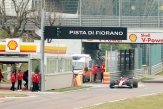
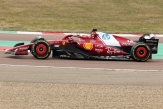
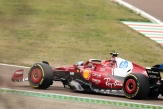
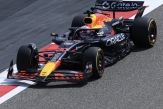
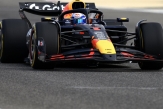


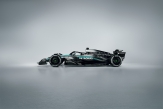
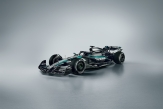
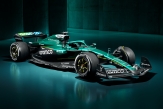
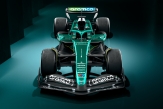
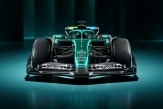
.jpg)
.jpg)
.jpg)

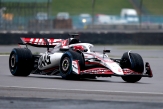

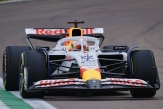
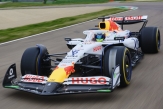
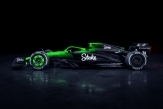
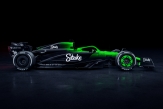

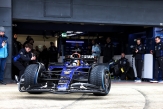
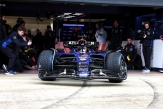
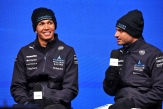

02/12/2025 от Огнян Тенчев (drJeckyll), няма коментари